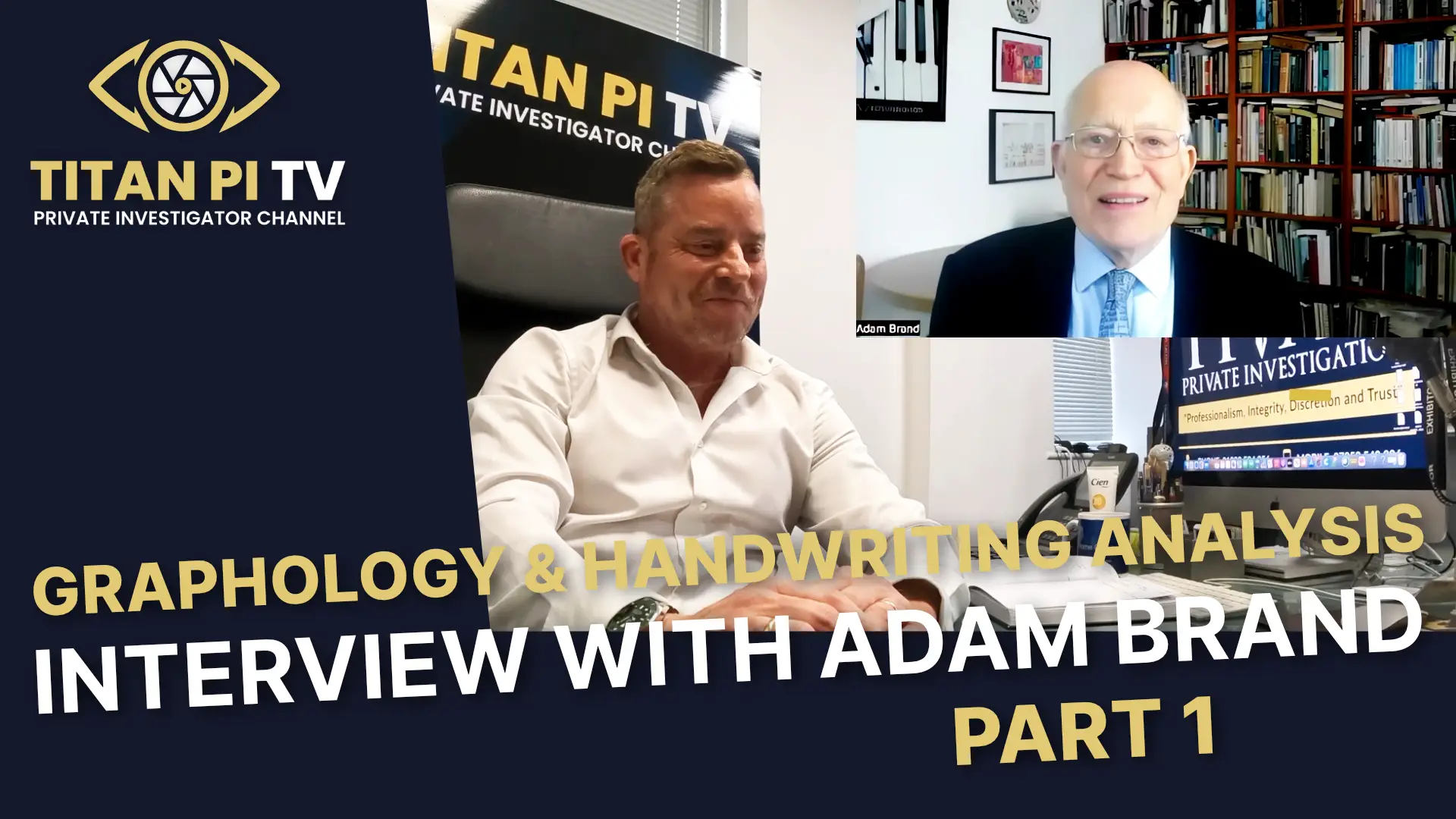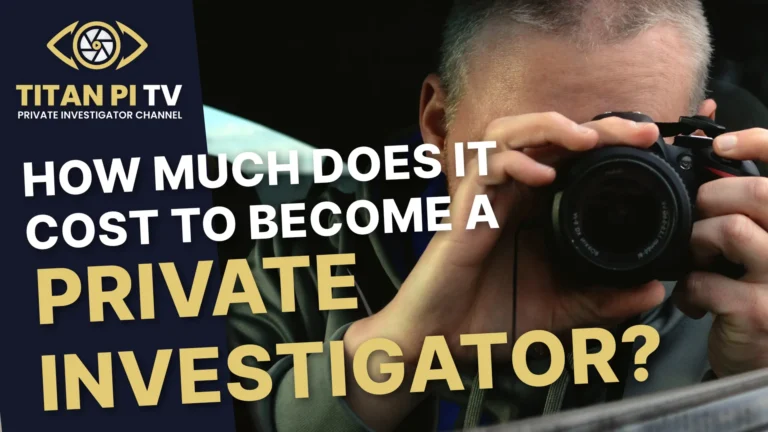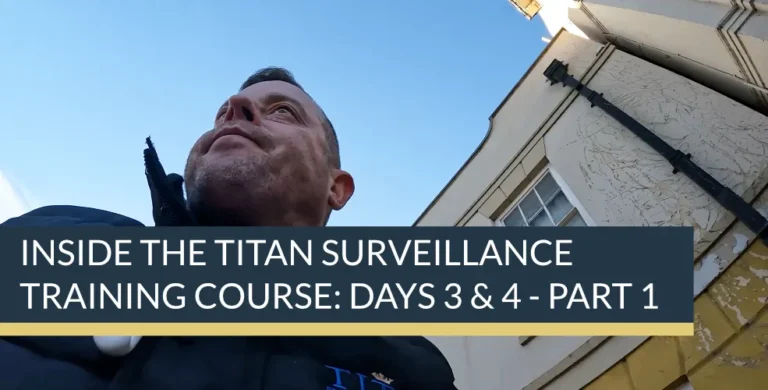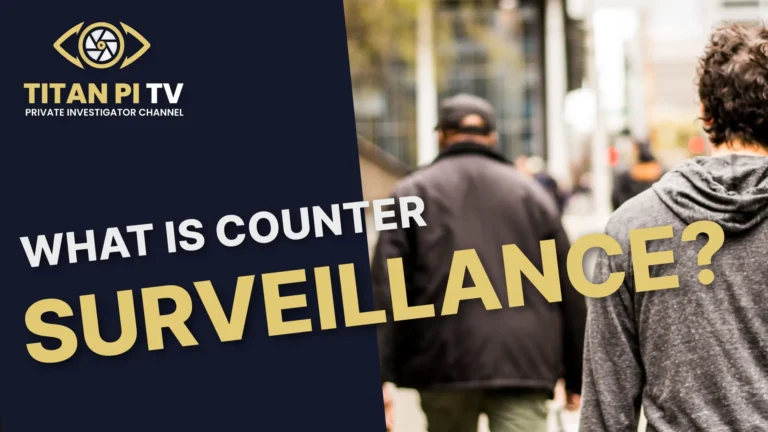Graphology and Handwriting Analysis: Interview with Adam Brand
In the latest episode of Titan PI TV, viewers are treated to a fascinating exploration of the world of graphology and handwriting analysis. Hosted by Simon Henson, Managing Director of Titan Private Investigation Limited, this episode marks the first part of an in-depth interview with Adam Brand, Titan’s resident graphologist and handwriting analysis expert. The discussion offers a rare glimpse into the science, art, and real-world application of handwriting analysis within the context of private investigations and legal proceedings in the United Kingdom.
Inside Titan: A Leading Investigation Agency
Titan Private Investigation Limited, headquartered in Derby, is a prominent name in the field of private investigations, with a network of ten offices stretching from London to Manchester. The agency is renowned for its operational expertise and commitment to uncovering the truth in complex cases. Titan PI TV, available both as a YouTube series and a podcast, provides an insider’s perspective on the agency’s work, demystifying the investigative process for a wider audience.
Introducing Adam Brand: A Lifelong Fascination
Simon Henson opens the episode by welcoming Adam Brand, whose journey into graphology began in childhood. Adam recounts a formative experience: as a young boy, he was taken to a store to meet Father Christmas, only to find himself instead being asked to write something for a man who was not the real Santa. Feeling somewhat cheated, Adam’s curiosity was piqued when his mother explained that the exercise was related to handwriting analysis. From that moment, Adam developed a lifelong fascination with handwriting, even as his professional life initially took him into the world of business.
Despite not working full-time in the field at first, Adam’s passion for graphology never waned. Over the years, he pursued formal qualifications, eventually becoming a respected expert in both graphology and forensic handwriting analysis.
The Path to Professional Graphology
Simon probes further, asking Adam about the qualifications required to become a graphologist. Adam explains that the British Institute of Graphologists is the primary body in the UK, awarding a diploma after three years of rigorous study across various modules. For those wishing to specialise in forensic or legal work, further training is essential. Institutions such as the University of Lancaster and the Cambridge School of Graphology offer advanced courses in judicial graphology, focusing on the legal aspects of handwriting analysis.
Adam clarifies that while graphology is typically associated with assessing personality traits through handwriting, forensic work is more concerned with authorship—determining who wrote a particular document, rather than delving into the writer’s character. This distinction is crucial in legal contexts, where the focus is on objective analysis rather than psychological profiling.
Graphology vs. Handwriting Analysis: Understanding the Distinction
A key theme of the interview is the distinction between graphology and handwriting analysis. Adam explains that handwriting analysis is an umbrella term encompassing all aspects of examining handwriting, including both personality assessment and forensic identification. Graphology, on the other hand, is specifically concerned with the psychological interpretation of handwriting.
In legal settings, the term “document examination” is often used, which includes the analysis of paper, ink, and handwriting. While document examination is broader, Adam emphasises that a solid grounding in graphological principles is invaluable for forensic document examiners. Understanding the subtle characteristics of handwriting can be instrumental in detecting disguised writing or forgeries, even if personality traits are not discussed in court.
The Realities of Forensic Handwriting Analysis
Simon steers the conversation towards the practicalities of forensic handwriting analysis, particularly in the context of legal disputes such as contested wills. Adam outlines the process: when a signature is questioned, he typically requires up to twelve known, authentic signatures from the same individual for comparison. Ideally, these exemplars should span a period of three years before and after the questioned signature to account for natural variation over time.
The challenge, Adam notes, is obtaining sufficient known samples. With a robust set of exemplars, an analyst can assess the range of natural variation and quickly identify anomalies. Interestingly, Adam points out that laypeople often have an intuitive sense when something is amiss with a signature, a fact supported by studies in the United States. However, the role of the expert is to provide a structured, evidence-based analysis that can withstand scrutiny in court.
The Science Behind the Analysis
Delving deeper, Adam explains that the most telling features in handwriting are often the unconscious movements—those aspects of writing that individuals are unaware of and therefore find difficult to disguise. These include the spacing between letters, words, and lines, as well as the margins on a page. Such features are unique to each writer and can be critical in distinguishing genuine handwriting from forgeries.
Another important area is the analysis of inconspicuous movements, such as the placement of dots on initials or the angle of certain strokes. For example, the angle of the epsilon (a release stroke) is particularly challenging to replicate in a forgery. Analysts also examine the proportional ratios between different zones of handwriting: the upper zone (tops of letters like ‘l’ and ‘h’), the middle zone (letters such as ‘m’, ‘n’, and vowels), and the lower zone (descenders like ‘y’, ‘g’, and ‘j’). Even when attempting to forge a signature, individuals unconsciously emphasise certain zones, providing valuable clues to the analyst.
Perhaps most revealing of all is the end of a signature. Adam reveals that forgers often focus their efforts on the beginning of a signature, but as they strive for fluency, their concentration wanes towards the end, leading to tell-tale inconsistencies. This is where analysts spend much of their time, meticulously comparing the terminal strokes of questioned and known signatures.
Beyond Signatures: Analysing Handwriting in Letters
The conversation shifts to the analysis of handwriting in documents such as poison pen letters. Adam explains that, in these cases, having a substantial amount of writing to examine makes the analyst’s job easier. When individuals attempt to disguise their handwriting over a lengthy document, their unique characteristics inevitably begin to surface, especially towards the end as concentration lapses.
Cursive writing, in particular, offers a wealth of information due to the variety of joins, letter formations, and spacing. In contrast, signatures—often a person’s public image—tend to be more stylised and less detailed, making them more challenging to analyse in isolation.
Adam recounts a common pitfall for would-be anonymous letter writers: while they may type the body of a poison pen letter to avoid detection, they often handwrite the envelope, inadvertently revealing their identity through their unique handwriting traits.
The Limits and Challenges of Handwriting Analysis
While the science of handwriting analysis is robust, Adam acknowledges its limitations. Occasionally, a highly trained individual—such as a graphologist with knowledge of forensic techniques—may successfully evade detection, as in a notable case in India where a perpetrator eluded police for seven years. However, such cases are rare. Most people are unaware of the full range of features that analysts scrutinise, making it difficult to maintain a convincing disguise.
The Value of Handwriting Analysis in Investigations
Throughout the interview, Adam underscores the value of handwriting analysis in private investigations and legal proceedings. Handwriting provides a rich source of information, often making it possible to identify the author of a document with a high degree of confidence. The combination of scientific rigour and intuitive understanding makes handwriting analysis a powerful tool in the investigator’s arsenal.
Looking Ahead: More to Come
As the episode draws to a close, Simon Henson thanks Adam Brand for sharing his expertise and insights. The conversation promises to continue in future episodes, delving even deeper into the nuances of graphology and its application in real-world investigations.
For those interested in the intersection of psychology, forensics, and investigative work, this episode of Titan PI TV is essential viewing. Whether you are a legal professional, a fellow investigator, or simply a curious member of the public, the world of handwriting analysis offers a compelling blend of science and human insight.
Stay tuned for Part 2 of this interview, where Simon and Adam will explore further case studies and the evolving role of graphology in modern investigations.
What’s Next on Titan PI TV?
Thank you for reading, watching or listening to this week’s blog post on Titan PI TV. If you found this information helpful, please give us a thumbs up and subscribe to our channel. We’re aiming to reach 2,000 subscribers in April, marking our two-year anniversary. Stay safe, and we’ll see you in the next episode!
Stay tuned for more insights into the world of private investigations. Until next time, stay safe and keep learning!
Titan PI TV: Uncovering the Truth, One Investigation at a Time.













